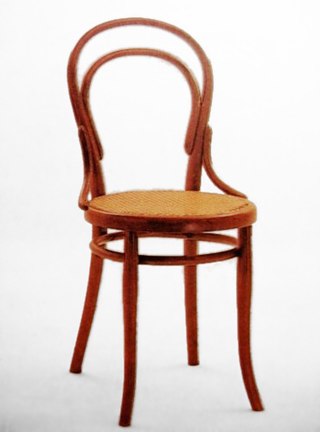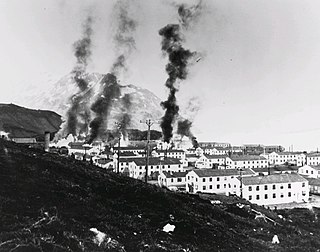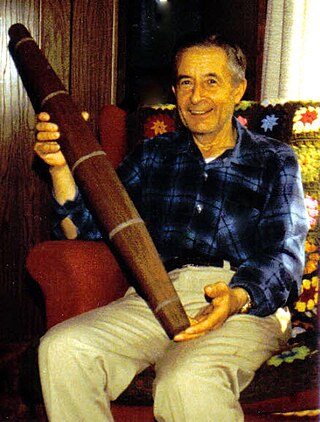
Aleuts are the Indigenous people of the Aleutian Islands, which are located between the North Pacific Ocean and the Bering Sea. Both the Aleuts and the islands are politically divided between the US state of Alaska and the Russian administrative division of Kamchatka Krai. This group is also known as the Unangax̂ in Unangam Tunuu, the Aleut language. There are 13 federally recognized Aleut tribes in the Aleut Region of Alaska. In 2000, Aleuts in Russia were recognized by government decree as a small-numbered Indigenous people.

The City of Unalaska is the main population center in the Aleutian Islands. The city is in the Aleutians West Census Area, a regional component of the Unorganized Borough in the U.S. state of Alaska. Unalaska is located on Unalaska Island and neighboring Amaknak Island in the Aleutian Islands off mainland Alaska. The population was 4,254 at the 2020 census, which is 81% of the entire Aleutians West Census Area. Unalaska is the second largest city in the Unorganized Borough, behind Bethel.

The Eskaleut, Eskimo–Aleut or Inuit–Yupik–Unangan languages are a language family native to the northern portions of the North American continent, and a small part of northeastern Asia. Languages in the family are indigenous to parts of what are now the United States (Alaska); Canada including Nunavut, Northwest Territories, northern Quebec (Nunavik), and northern Labrador (Nunatsiavut); Greenland; and the Russian Far East. The language family is also known as Eskaleutian, or Eskaleutic.

A rocking chair or rocker is a type of chair with two curved bands attached to the bottom of the legs, connecting the legs on each side to each other. The rockers contact the floor at only two points, giving the occupant the ability to rock back and forth by shifting their weight or pushing lightly with their feet. Rocking chairs are most commonly made of wood. Some rocking chairs can fold.

Gebrüder Thonet or the Thonet Brothers was a European furniture manufacturer. Three firms descended from the original company remain active today, in Germany, Austria and the Czech Republic (TON).

The No. 14 chair is the most famous chair made by the Thonet chair company. Also known as the "bistro chair", it was designed in the Austrian Empire by Michael Thonet and introduced in 1859, becoming the world's first mass-produced item of furniture. It is made using bent wood (steam-bending), and the design required years to perfect. With its affordable price and simple design, it became one of the best-selling chairs ever made. Gebrüder Thonet sold 50 million No. 14s between 1859 and 1930, and the company's successor-organisations have sold millions more since then. "It represents the best example of a design which has been refined to the point where there is no way to improve it."

John Ben Benson Jr. was an Alaska Native best known for designing the flag of Alaska. Benson was 14 years old when he won a contest in 1927 to design the flag for the Territory of Alaska, which became a U.S. state on January 3, 1959.

Michael Thonet was a German-Austrian cabinet maker, known for the invention of bentwood furniture.

Ercol is a British furniture manufacturer. It was established by Lucian Ercolani and his sons in High Wycombe, Buckinghamshire and is now based in Princes Risborough.

The baidarka or Aleutian kayak is a watercraft consisting of soft skin over a flexible space frame. Without primarily vertical flex, it is not an iqyax. Its initial design was created by the Aleut people (Unangan/Unangas), the Indigenous people of the Aleutian Islands.

The Battle of Dutch Harbor took place on 3-4 June 1942, when the Imperial Japanese Navy launched two aircraft carrier raids on the Dutch Harbor Naval Operating Base and U.S. Army Fort Mears at Dutch Harbor on Amaknak Island, opening the Aleutian Islands campaign of World War II. The bombing marked the first aerial attack by an enemy on the continental United States and was the second time in history that the continental U.S. was bombed by someone working for a foreign power, the first being the accidental bombing of Naco, Arizona, in 1929.
Anfesia Shapsnikoff was an Aleut leader and educator born October 1, 1901, at Atka, Alaska, in the Aleutian Islands. Renowned for her weaving of Aleut grass baskets, Anfesia flew to many communities throughout Alaska to teach children the lost art of Attu basket weaving.

Alaska Native cultures are rich and diverse, and their art forms are representations of their history, skills, tradition, adaptation, and nearly twenty thousand years of continuous life in some of the most remote places on earth. These art forms are largely unseen and unknown outside the state of Alaska, due to distance from the art markets of the world.

Steam bending is a woodworking technique where wood is exposed to steam to make it pliable. Heat and moisture from steam can soften wood fibres enough so they can be bent and stretched, and when cooled down they will hold their new shape.

Andrew Gronholdt was a famous Aleut from Sand Point, Alaska, in the Shumagin Islands south of the lower Alaska Peninsula and became famous for rejuvenating the ancient Unangan art of carving hunting hats called chagudax. In January 2012, a book was published posthumously by Gronholdt titled "Chagudax: A Small Window into the Life of An Aleut Bentwood Hat Carver" Gronholdt's woodworking techniques, wood steaming and bending methods, and instructional design methodologies were legendary.

The Alaska State Museum is a museum in Juneau, Alaska, United States. The museum's collections include cultural materials from the people of the Northwest Coast, the Athabascan cultures of Interior Alaska, the Inupiaq of the north coast, and the Yup'ik of the southwest of Alaska, the Alutiiq people of Prince William Sound and Kodiak Island, and the Unangax from out along the Aleutian chain. Artifacts from the state's Russian colonial eras, state and political history, fine art, natural history, industry and trades can also be found on exhibit.
Alaska Natives are a group of indigenous people that live in the state of Alaska and trace their heritage back to the last two great migrations that occurred thousands of years ago. The Native community can be separated into six large tribes and a number of smaller tribes, including the Iñupiat, Yup'ik, Aleut, Tlingit, Haida, Tsimshian, and others. Even with just a small number of communities that make up the entire population, there were more than 300 different languages that the Natives used to communicate with one another.

Molded plywood is the term for two- or three-dimensionally shaped products from multiple veneer layers that are glued together through heat and pressure in a pressing tool. The veneer layers are arranged crosswise at an angle of 90 degrees. Molded wood is used for flat furniture components such as seats, backrests and seat shells. When the veneer layers are arranged in the same direction, it is called laminated wood. It is used for armrests and chair frames. After pressing, the blanks are processed mechanically. A particular feature is the ability to produce different variations of shapes from the blanks. Due to its immense strength and low weight, molded wood is particularly suitable for interior decoration, seating furniture, bed slats, skateboards and vehicle construction.

Unangan hunting headgear are wooden hats associated with the Unangan or Unangas, the Indigenous peoples of what are currently known as the Aleutian Islands.
Jerah Chadwick was the Alaska Poet Laureate from 2004 to 2006. Most of his writing centers around the time he spent in Alaska in an abandoned World War II facility with his partner, Mike Rasmussen.



















